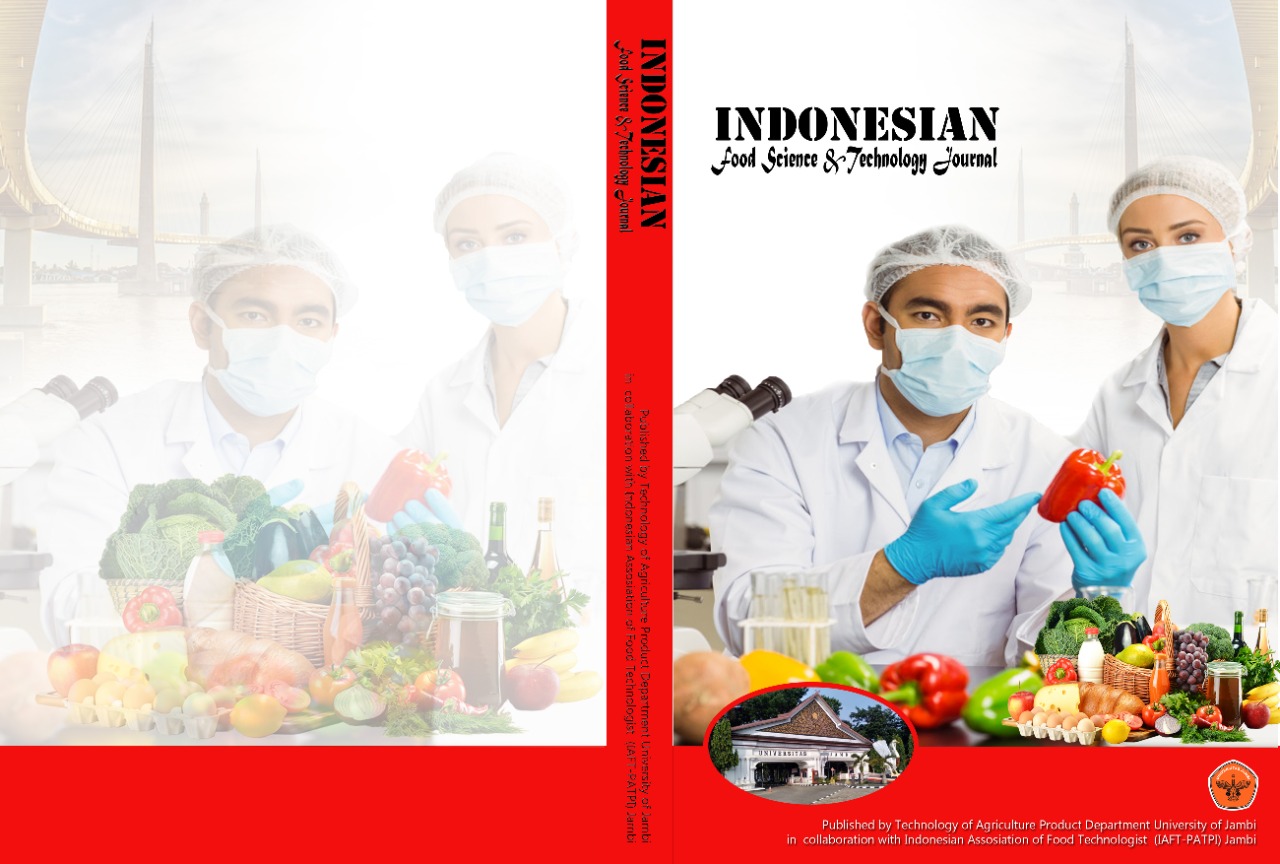Optimization of Banana Peel Vinegar Production: Effect of Vinegar Starter Concentration on Organoleptic Properties
DOI:
https://doi.org/10.22437/ifstj.v8i1.36678Keywords:
Acetic acid fermentation, banana peel vinegar, organoleptic characteristics, waste reductionAbstract
Banana peels, a part of the fruit with numerous benefits, have not been fully utilized, leading to significant organic waste. Banana peel vinegar is a product derived from the acetic acid fermentation of banana peels. This study examined the effects of varying vinegar starter concentrations on the organoleptic characteristics of vinegar made from kepok banana peels (Musa acuminata Colla). The research employed an experimental method with a laboratory experiment approach, incorporating both qualitative and quantitative analyses. The study involved five trained panelists and 25 untrained panelists. Data were analyzed using variance analysis and were tested using Berat Nyata Jujur (BNJ) or Tukey’s Honestly Significant Difference (HSD) test. The concentration of the vinegar starter influenced the color, aroma, and taste of banana peel vinegar. Among the four treatments, the 15% vinegar starter concentration was the most preferred by both trained and untrained panelists. The study concludes that a 15% vinegar starter concentration is optimal for producing banana peel vinegar with the most favorable organoleptic properties, making it a promising approach for reducing organic waste. Likewise, the results of this study can serve as a reference for the production of vinegar from kepok banana peels.Downloads
Downloads
Published
2024-12-31
How to Cite
Iskandar, K. G., Safrida, S., Muhibbuddin, M., Iswadi, I., & Hamid, Y. H. . (2024). Optimization of Banana Peel Vinegar Production: Effect of Vinegar Starter Concentration on Organoleptic Properties. Indonesian Food Science and Technology Journal, 8(1), 117–125. https://doi.org/10.22437/ifstj.v8i1.36678
Issue
Section
Articles
License
Copyright (c) 2024 Indonesian Food Science and Technology Journal

This work is licensed under a Creative Commons Attribution 4.0 International License.







